New Issue
 Aircraft rescue and fire fighting doesn’t always take place within the airport
boundary. The February 2009 crash of Colgan Air Flight 3407 occurred in a residential
neighborhood about 5 nm (9 km) from the airport. The March cover story details
the exemplary coordination ARFF arranged with local fire and rescue departments
at the crash site.
Aircraft rescue and fire fighting doesn’t always take place within the airport
boundary. The February 2009 crash of Colgan Air Flight 3407 occurred in a residential
neighborhood about 5 nm (9 km) from the airport. The March cover story details
the exemplary coordination ARFF arranged with local fire and rescue departments
at the crash site.
Also,
Mark Lacagnina describes the Colgan accident causal factors and outcome, based
on the NTSB accident report. Other stories concern proposed changes in regulations
for carriage of lithium batteries on aircraft; the strained relationships between
local and “expat” maintenance workers in Nigeria; the new FSF Basic Aviation
Risk Standard, designed for mining and resource company aviation operations;
plus additional items of interest. 68 pages. [PDF 4.1M] Read
more >

In
Sight
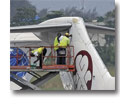 There
is no valid reason why aviation maintenance technicians of different races,
tribes and cultures cannot learn to work together in a friendly environment,
enjoying equal career opportunities within the maintenance, repair and overhaul
facilities in Nigeria. 3 pages. [PDF 258K] Read
more > There
is no valid reason why aviation maintenance technicians of different races,
tribes and cultures cannot learn to work together in a friendly environment,
enjoying equal career opportunities within the maintenance, repair and overhaul
facilities in Nigeria. 3 pages. [PDF 258K] Read
more >
Back to top
Safety
Standards
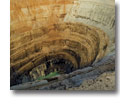 Flight
Safety Foundation’s new Basic Aviation Risk Standard (BARS) is intended
to address the safety issues facing aviation operations in the resource sector
— a term that typically encompasses mining and energy companies with
operations that are primarily onshore — by establishing common safety
standards. 6 pages.
[PDF 543K] Read
more > Flight
Safety Foundation’s new Basic Aviation Risk Standard (BARS) is intended
to address the safety issues facing aviation operations in the resource sector
— a term that typically encompasses mining and energy companies with
operations that are primarily onshore — by establishing common safety
standards. 6 pages.
[PDF 543K] Read
more >
Back to top
Causal
Factors
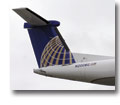 The
captain’s inappropriate response to a stick shaker activation was the
probable cause of an unrecoverable stall and the crash of a Colgan Air Bombardier
Q400 on approach to Buffalo Niagara (New York, U.S.) International Airport
the night of Feb. 12, 2009, according to the U.S. National Transportation Safety
Board. 6
pages. [PDF 405K] The
captain’s inappropriate response to a stick shaker activation was the
probable cause of an unrecoverable stall and the crash of a Colgan Air Bombardier
Q400 on approach to Buffalo Niagara (New York, U.S.) International Airport
the night of Feb. 12, 2009, according to the U.S. National Transportation Safety
Board. 6
pages. [PDF 405K]
Read
more >
Back to top
Cover
Story
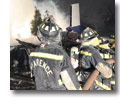 When
the Q400 struck a house and exploded, the volunteer fire chief pulled ARFF
specialists into a massive response. So began 11 days of ARFF mutual aid to
various stages of firefighting, crash site recovery and accident investigation
in Clarence Center, a village surrounded by the Town of Clarence in New York,
U.S. 6
pages. [PDF 359K] Read
more > When
the Q400 struck a house and exploded, the volunteer fire chief pulled ARFF
specialists into a massive response. So began 11 days of ARFF mutual aid to
various stages of firefighting, crash site recovery and accident investigation
in Clarence Center, a village surrounded by the Town of Clarence in New York,
U.S. 6
pages. [PDF 359K] Read
more >
Expanded Version of this article
Back to top
Runway
Safety
 SMS
risk assessments convince the FAA that more of ICAO’s
ATC clearance procedures and phrases can be adopted safely. New factors have
persuaded the FAA to adopt elements of safety recommendations traceable to
accident investigations more than a decade ago. 4 pages. [PDF
217K] Read
more > SMS
risk assessments convince the FAA that more of ICAO’s
ATC clearance procedures and phrases can be adopted safely. New factors have
persuaded the FAA to adopt elements of safety recommendations traceable to
accident investigations more than a decade ago. 4 pages. [PDF
217K] Read
more >
Back to top
Maintenance
Matters
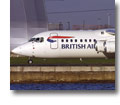 Accident
investigators blame the rough finish on a landing gear part and the incomplete
performance of a corrective airworthiness directive for a fatigue failure that
caused the collapse of the nose landing gear on an Avro 146-RJ100 after touchdown
at London City Airport. 3 pages.
[PDF 215K] Read
more > Accident
investigators blame the rough finish on a landing gear part and the incomplete
performance of a corrective airworthiness directive for a fatigue failure that
caused the collapse of the nose landing gear on an Avro 146-RJ100 after touchdown
at London City Airport. 3 pages.
[PDF 215K] Read
more >
Back to top
Seminar
EASS
 Urgent
calls for action in establishing binding obligations to block criminal prosecution
of people who provide safety information and in pooling the resources of member
states to create a pan-European air accident investigation board kicked off
the Flight Safety Foundation 22nd annual European Aviation Safety Seminar
March 15–17 in Lisbon, Portugal. 4 pages.
[PDF 288K] Read
more > Urgent
calls for action in establishing binding obligations to block criminal prosecution
of people who provide safety information and in pooling the resources of member
states to create a pan-European air accident investigation board kicked off
the Flight Safety Foundation 22nd annual European Aviation Safety Seminar
March 15–17 in Lisbon, Portugal. 4 pages.
[PDF 288K] Read
more >
Back to top
Cargo
Safety
 U.S.
transportation officials expect to finalize new rules later this year for the
air transportation of lithium batteries and cells — including those that
are packed with or contained in equipment. 3 pages.
[PDF 237K] Read
more > U.S.
transportation officials expect to finalize new rules later this year for the
air transportation of lithium batteries and cells — including those that
are packed with or contained in equipment. 3 pages.
[PDF 237K] Read
more >
Back to top

President’s Message
Lately, several high-profile accidents and incidents have involved violations of basic sterile cockpit procedures. This troubles me, and I know that I am not alone. 1 page. [PDF 85K] Read
more >
Back to top
Editorial Page
Members of Congress, alarmed by the Colgan captain’s poor piloting skills, compounded by a relatively inexperienced first officer’s response, are legislating a solution. 1 page. [PDF 70K] Read
more >
Back to top
Safety Calendar
A
listing of aviation safety-related conferences, seminars and meetings through
the beginning of May 2010. 1 page. [PDF 71K] Read
more >
Back to top
In Brief
The risk of collisions on runways is among the most critical safety issues in Canada’s transportation system, the Transportation Safety Board said in releasing its “Watchlist” of nine items that present the greatest risks to Canadians.
3 pages. [PDF 187K] Read
more >
Back to top
Data Link
As flight deck automation technology has advanced, most commercial transport pilots have transitioned from active participants in many processes to supervisors of the automation. Unfortunately, this shift can lead to complacency. 4 pages.
[PDF 106K] Read
more >
Back to top
Info Scan
For those who did not view the Frontline program, “Flying Cheap,” when it aired on U.S. television, PBS has made it available on the Internet. The video and its full-text transcript may be viewed and read online at no charge. 5 pages.
[PDF 395K] Read
more >
Back to top
On Record
The following information provides an awareness of problems in the hope that they can be avoided in the future. The information is based on final reports by official investigative authorities on aircraft accidents and incidents. 8 pages. [PDF 288K] Read more >
Back to top

|